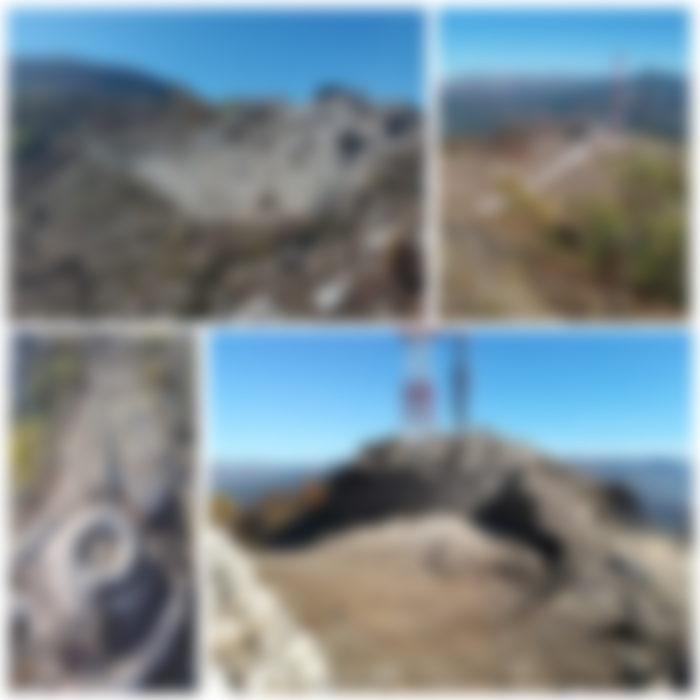This year, the Homeland Museum from Priboj will start excavating the medieval town of Jagat, one of the five fortified medieval towns on the territory of Priboj, which is still not known for sure when they were created.
Zavičajni muzej iz Priboja ove godine započinje iskopavanje srednjovekovnog grada Jagat, jednog od pet utvrđenih srednjovekovnih gradova na teritoriji Priboja, za koje se ni danas ne zna pouzdano kada su nastali.

It is a fortress that occupies an area of 1.2 hectares, with the remains of an observation tower, a defensive wall and a quadrangular defensive tower. The origin of Priboj as a city is directly connected with the fortification of Jagat na Biću, which could be concluded from historical records.
Although it is not known for sure when this fortification was built, the assumptions are that it was built at the beginning of the 14th century, bearing in mind that the city was introduced into historical writings as early as the 15th century.
U pitanju je tvrđava koja zauzima prostor od 1,2 hektara, sa ostacima kule osmatračnice, odbrambenog zida i odbrambene kule četvorougaonog oblika. Nastanak Priboja kao grada direktno je povezan sa utvrđenjem Jagat na Biću, što se dalo zaključiti iz istorijskih spisa.
Iako se pouzdano ne zna kada je nastalo ovo utvrđenje, pretpostavke su da je nastalo početkom 14. veka, imajući u vidu da se grad kao utvrđenje već u 15. veku uvodi u istorijske spise.

After the occupation by the Turkish authorities, it became part of the Turkish defensive line around 1530, where there was a garrison of the Turkish army of 150 soldiers, who according to historical data from that time were supported by taxes taken from the locals Mažići, Banja and Goleš. . Around 1830, when an uprising broke out in Bosnia, after the Bulgarian army occupied the city, it was deserted and never had its purpose again.
Posle okupacije od turske vlasti, postao je deo turske odbrambene linije oko 1530. godine, gde je postojao garnizon turske vojske od 150 vojnika, koji su prema istorijskim podacima iz tog vremena izdržavani zahvaljujući porezu koji se uzimao od meštana okolnih mesta Mažići, Banja i Goleša. Oko 1830. godine, kada je izbio ustanak u Bosni, nakon što je bugarska vojska zauzela ovaj grad on je opusteo i nikada više nakon toga nije imao svoju namenu.
The fortress has a triangular base, the remains of the walls are 2.5 meters high, and the collapsed defensive towers are clearly visible. In the upper town, which is a specificity, the fortress had two wells of drinking spring water and could withstand sieges for a long time. The dungeon tower, 2.8 meters thick, is located on the northwest side of the fortress and had a cistern for collecting and storing water. The second tower, about 1 meter thick and with a round base, was located in the northeastern part of the hill, on the side from which the approach to the fortress was the easiest. A rampart, 1.2 meters thick and about 90 meters long, connected this tower with the rest of the fortification, and today it is preserved at a height of between 1.5 and 3.5 meters.
Tvrđava ima trougaonu osnovu, ostaci zidova visoki su 2,5 metara, jasno se raspoznaju obrušene odbrambene kule. U gornjem gradu, što je specifičnost, tvrđava je imala dva bunara pitke izvorske vode i dugo je mogla da odoleva opsadama. Donžon kula, debljine zidova 2.8 metara, smeštena je na severozapadnoj strani tvrđave i imala je u sebi cisternu za skupljanje i čuvanje vode. Druga kula, debljine zidova oko 1 metra i okrugle osnove, bila je smeštena severoistočnom delu uzvišenja, na strani sa koje je prilaz tvrđavi bio najlakši. Bedem, debljine 1.2 i dužine oko 90 metara povezivao je ovu kulu sa ostatkom utvrđenja, a danas je očuvan u visini između 1.5 i 3.5 metara.


zanimiljivo,treba da vidimo i to